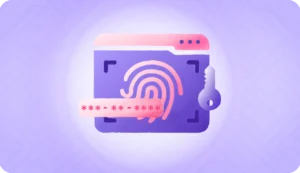A few years ago, opening a bank account in a small town often meant losing a workday, traveling miles to a branch, and waiting weeks for verification. Today, the same customer can complete identity checks over a quick video call and access credit, insurance, or savings products almost instantly. This shift mirrors India’s broader progress in financial access.

According to the RBI’s Financial Inclusion Index, India’s score rose from 64.2 to 67 in 2025. As institutions push this momentum forward, Video KYC is becoming essential—not just to meet compliance, but to enable faster and more scalable onboarding across geographies.
Video KYC is no longer a backend regulatory formality. It has evolved into a key driver of financial inclusion, helping banks, NBFCs, and fintechs serve customers who were previously constrained by distance, documentation gaps, or limited branch access. In a rapidly digitizing economy, it is emerging as both a trust-building mechanism and a growth catalyst for India’s next wave of financially empowered users.
Why Financial Inclusion Matters in India
Financial inclusion means that everyone, especially people in remote or underserved areas, has access to services such as banking, credit, and payment at a fair price. A micro-entrepreneur from a rural area can open a bank account and apply for a loan for her business instead of depending on her savings.
Two key indicators demonstrate India is making steady progress towards financial inclusion. The Pradhan Mantri Jan Dhan Yojana (PMJDY), launched in India to provide a basic savings account, now covers 56.93 crore people. And, UPI handled over 18 billion transactions in June 2025 alone, which accounts for 85% of the digital transactions in India.
How Regulations Paved the Way
The RBI’s KYC guidelines have evolved over the years to balance security, accessibility, and customer convenience. Understanding this journey will help you understand how digital solutions like Video KYC (V-CIP) fit into today’s regulatory landscape.

Evolution of RBI’s KYC Journey
- Traditional KYC: Paper-based, required physical documents and in-person verification. Slow and costly, especially for remote customers.
- Aadhaar eKYC: Introduced instant digital verification via OTP and biometrics, increasing the pace of onboarding.
- Legal Changes (2018): Restrictions on Aadhaar use by some private players. Shifted to offline Aadhaar XML and CKYC alternatives.
- V-CIP Launch (2020): Allowed video-based remote onboarding via secure video calls.
- Re-KYC & Upgrades: Current guidelines permit V-CIP for new accounts, periodic KYC updates (re-KYC), and converting minimum KYC accounts to full KYC.
Current RBI V-CIP Guidelines
- V-CIP is equal to in-person verification for new, minimum KYC, and KYC update cases.
- The video call must use the bank’s own secure network, not apps like WhatsApp or Zoom.
- If needed, bank staff or business partners can assist, but the bank is responsible for checks.
- During the call, the system records the GPS location, the customer’s live face, and the entire session for security.
- Encryption and face-matching tech help prevent fraud and protect data.
- Only connections from inside India are allowed; the session and records must be stored in India.
- All accounts opened via V-CIP need a quick internal audit before they’re ready.
- Documents like recent Aadhaar, PAN, and CKYC reports or DigiLocker files can be used.
What Makes Modern Video KYC Different
Video KYC is often thought of as a video call. But it’s actually a complex, technology-driven process. Designed to match the security and compliance of in-person verification, but done remotely in minutes. Here’s how it works beyond the video:
- Secure Session and Consent: The call starts from a secure platform owned by the bank or a certified partner. Customer consent is recorded and tamper-proof to ensure transparency.
- Liveness Detection and Facial Match: AI verifies the customer is present live, not using a photo or video, by checking face movement and matching it with official ID photos.
- Automated Document Verification: Original documents like PAN and Aadhaar are scanned with OCR technology, then verified instantly against government databases, including DigiLocker and CKYC records.
- Geo-tagging: The system logs live GPS coordinates with a timestamp, confirming the customer’s physical presence inside India and preventing fraud through IP spoofing.
- Encryption and Audit Trail: The entire session is encrypted and recorded along with official activity logs. Data is securely stored in India for regulatory audits.
- Concurrent Audit: Every account created via Video KYC undergoes immediate audit to ensure process integrity and compliance.
The Business Case: Faster, Cheaper, Safer
A good customer onboarding process is fast and less expensive, directly impacting your bottom line and customer experience. Video KYC revolutionizes traditional KYC processes by slashing costs and speeding up onboarding.
How Video KYC Saves Cost and Time
- Cost Savings:
Traditional KYC costs ₹50 to ₹500 per customer, including staff, branches, printing, and logistics. Video KYC cuts this to about one-tenth by removing physical infrastructure and manual work, making large-scale onboarding cost-effective.
- Time Savings:
Traditional KYC can take days or weeks due to paperwork and in-person visits. Video KYC reduces onboarding to a 2–5 minute session. AI and automation allow agents to verify hundreds of customers daily, enabling near-instant activation.
This real-world impact mirrors the successful transformation seen in the IndMoney and HyperVerge partnership, where a video KYC rollout in just 9 days drove 4x business volume growth. This shows how compliance can become a key enabler of growth.
How Video KYC Drives Financial Inclusion in Rural and Remote India
Video KYC (V-CIP) brings banking closer to remote villages. It also replaces paper-heavy and costly processes, which discouraged villagers from accessing credit, insurance, or savings. As the V-CIP technology can also work in areas with poor network conditions, identity verification can be handled from their smartphones or computers. Not to forget, due to the digital infrastructure like Aadhaar, PAN checks and CKYC, even those without traditional documents can now quickly onboard and use formal financial services.
Let’s understand this with the help of a real-life example.
Ramesh, a farmer in Maharashtra, had to do multiple exhausting trips to town to apply for a Kisan Credit Card (KCC) loan. Now, Ramesh uses his smartphone to upload digital IDs, get verified, and access affordable credit to invest in his farm.
The Tech Behind the Experience
There are three steps in the sophisticated technology framework that runs behind a video KYC process. This framework combines AI, secure data handling, and automation to deliver a fast, compliant, and fraud-proof identification process that is seamless for the customer.
The Tech Behind the Seamless Experience
- Secure Session & Smart Automation:
Video KYC starts from a bank’s secured network, with customer consent recorded securely before the session. Smart scheduling systems efficiently manage customer queues, optimize agent workload and reduce wait times.
- AI-powered Verification:
During the live call, AI performs crucial checks like liveness detection to confirm the customer’s presence and facial recognition to match them with an official ID. Before the session, OCR technology extracts data from submitted documents, enabling quick and precise verification against government databases in real-time.
- Compliance & Security:
The system captures live GPS coordinates (geo-tagging) to confirm the customer’s physical location in India and prevent fraudulent access via spoofed IPs. All communications are end-to-end encrypted, and the entire session is recorded and stored securely for audits. After verification, a concurrent audit ensures the process meets all regulatory requirements.
How Banks and Fintechs Are Using It
Banks and financial services use video KYC as a scalable tool to instantly verify customers while maintaining strict compliance, thereby integrating speed and security directly into their daily operations.
- Lending (Banks and NBFCs): Video KYC in banks enables digital-first onboarding for loan applicants and microfinance customers. NBFCs use this technology to boost conversion rates and reach rural or low-income segments for small-ticket loans. The use of AI-driven checks helps in reducing fraud by up to 95%
- Insurance: Insurance providers use video calls to streamline the policy issuance process and verify policyholders, even in remote regions. Video KYC can onboard customers in less than 60 seconds in a compliant manner, helping insurers accelerate sales and reduce the risk of fraudulent claims
- Payments and E-commerce: Fintech platforms and payment gateways use V-CIP for quick, compliant onboarding of new customers and merchants. This process accelerates merchant onboarding, which allows them to start accepting payments within hours rather than days.
- Wealth Management and Securities: Brokerages and investment platforms use V-CIP to meet SEBI-compliant onboarding requirements. AI-assisted KYC systems enable a high straight-through-process (STP) rate of 80% for customer approval. Organizations also report experiencing 70% fewer non-compliance issues when using Video KYC systems
Staying Secure and Compliant
Video KYC (V-CIP) replaces traditional in-person visits with a sophisticated digital security system. Here are its components:
- Encrypted Connection: All video, documents, and data sent during the session are encrypted. This means only the customer and the bank can access the information, and it prevents hackers from intercepting data.
- Location Verification (Geo-tagging): The system also records the user’s live GPS coordinates with a date-time stamp to prove you’re physically in India during verification. It also blocks connections from outside India or spoofed IP addresses.
- Secure Platform: The video call must start from the bank’s own secure network, not apps like WhatsApp. Customer consent is recorded before the session begins for complete transparency.
The final security layer creates a permanent, tamper-proof audit trail:
- Complete Recording: The entire video session, including the agent’s credentials and activity log, is securely recorded and stored in India. This record can be reviewed for compliance audits or disputes.
- Concurrent Audit: Every account opened via Video KYC undergoes an immediate audit to verify that the process was done correctly before the account becomes active.
How To Get Started: A Practical Rollout Plan
The practical rollout plan consists of the following three steps:
- Design (Compliance and Process Mapping):
Map the entire customer journey, focusing on regulatory checks. This includes geo-tagging to confirm customers are in India, liveness detection to prevent fraud, and integrating up-to-date Aadhaar XML verification. Set clear workflows and compliance baselines.
- Integrate (API Setup and Agent Training):
Implement APIs for features like face matching, OCR document reading, and real-time database checks. Train KYC officers on video KYC procedures and fraud detection to ensure smooth and effective customer verification.
- Scale (Monitoring, Audits, and Analytics):
Launch mandatory concurrent audits for all video KYC accounts before activation. Use analytics to monitor performance, identify drop-offs, fix issues, and improve conversion rates. Securely store all data as per regulatory requirements.
The Road Ahead
India’s financial inclusion programs have provided millions of Indians with access to various financial services. Video KYC will continue to play a big role by enabling real-time verification and supporting local languages.
In the future, it will also undergo major changes as digital IDs, voice and video biometrics will accelerate financial inclusion even further. The future looks promising, and with the bold adoption of advanced technologies, India’s KYC story will set a model for the world.
FAQs
Is Video KYC approved by the RBI for all financial institutions?
Yes. The Reserve Bank of India (RBI) has approved Video KYC (V-CIP) for all regulated financial institutions, including banks, NBFCs, insurance companies, and fintechs. This approval enables remote customer verification through secure live video interactions, eliminating the need for physical branch visits while maintaining regulatory compliance.
Can Video KYC be used for re-KYC or account updates?
Yes. Current RBI guidelines allow Video KYC not only for new customer onboarding but also for periodic re-KYC and for upgrading minimum KYC accounts to full KYC status. These guidelines help financial institutions maintain up-to-date customer records efficiently.
What documents are accepted in a Video KYC process?
Valid documents include Aadhaar (offline XML or OTP-based verification), PAN card, voter ID, driver’s license, and digital KYC records from platforms like DigiLocker and the Central KYC Registry (CKYCR). Aadhaar is not compulsory, but must be provided during sign-up for verification.
How does Video KYC support financial inclusion?
Video KYC removes the need for physical branch visits, making verification accessible from remote and rural areas via smartphones or computers. It speeds up onboarding, cuts costs, and supports vernacular languages and assisted onboarding. This inclusivity helps millions access credit, savings, and insurance products who were previously excluded due to logistical barriers.




